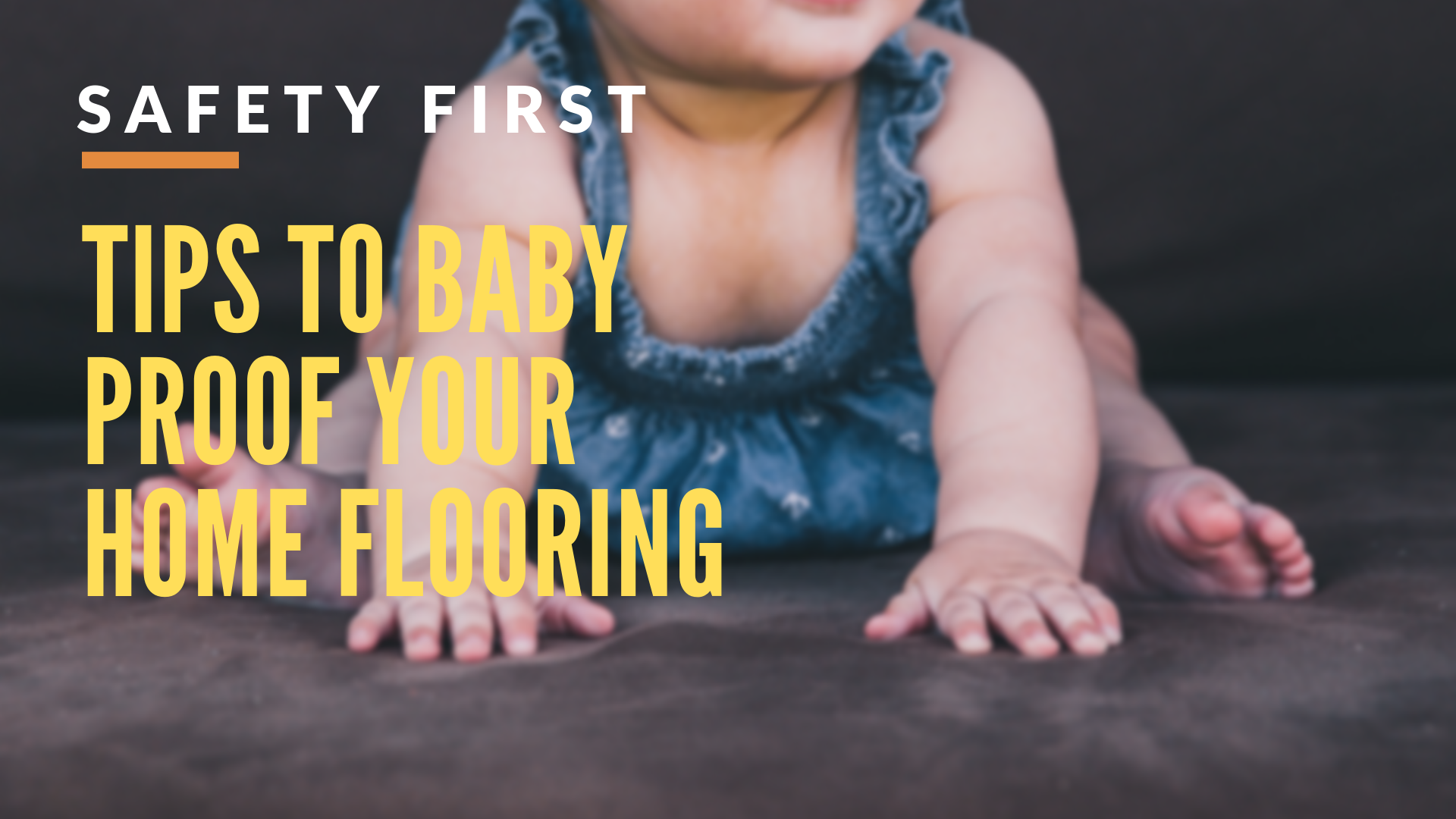So you’re expecting a new member in the family, and it will be only a matter of time before your little one will be up and running.
At this point, it’s crucial to create a safe environment for your baby, checking your home for potential dangers that may occur. Once you’ve protected the electric outlets and locked up the medicinal cabinets, it’s time to baby-proof your floor, too. You’ll feel much better knowing that your home is well-prepared.
Here are some helpful tips to baby-proof your home flooring:
Finding the Best Flooring for your Baby
When thinking about flooring options best suited for babies, the first thing that you should prioritize is softness. At a certain age, they will always be on the floor a lot. Therefore, they will need something soft to crawl, sit, lie and play.
While most would think that the carpet would be a more obvious choice, there are downsides when considering this option. They’re often quite hard to clean, especially if installed in a room where a lot of eating and messy play.
An alternative to this is hardwood floors, which can be layered in smaller, easier to clean area rugs. Moreover, they can be conductive in certain types of play such as building jigsaw puzzles, block towers, and plush toys. Still, the thought of having a nursery with a soft, plush carpet is more appealing. Just see to it that you’re buying is low-allergy, and steam cleaning it regularly. When choosing colors, very light shades tend to show more dirt easily, while very dark colors show up fluff. A mid-tone neutral hue is ideal, as it’s easier to decorate and live in at the same time.
If you’re considering hard floors with strategically placed soft rugs for playing and sitting, there are still quite a few things to consider. For example, there will be some hardwood floors that are softer than the others. The options that are more fitting for your kid’s tumbles and delicate knees are timber, bamboo, luxury vinyl, and laminate. Make sure that it’s also scratch resistant if there will be areas that push toys, and high chairs will be used.
Examine the Floor from Your Child’s Perspective
Ideally, you mustn’t wait until your child is already learning to crawl or already taking a few baby steps to think about baby-proofing your home. After all, you don’t want to get caught unprepared. It’s crucial not to assume that your baby does not see everything the same way that you do.
To become aware of the potential dangers in your home, take a crawling tour. Identify the most common hazards that you’ll encounter, and remove them on your infant’s path. Also, ensure that all rugs are secured in a non-skid backing, and take to repair all loose linoleum, tiles, and carpeting in your home to prevent tripping.
Narrowing Down Your Flooring Choices
As a parent, you should never compromise various safety factors when it comes to your flooring choice. Your goal is to have beautiful looking floors and the room that is safe and compatible with the everyday demands of your little one.
Therefore, ideally, the flooring should be:
- soft
- noise-absorbing
- preferably, warm
- aesthetically pleasing
If the costs aren’t a problem for you, you can also opt for ceramic tile floors covered with an array of rugs on areas where your child may continuously frequent. Luxurious hardwood floors are also an option. That way, if your child is all grown up, you can still keep those beautiful floors, and you either have the choice to save or dispose of the area rugs. If you’re on a tight budget, but still wish to meet the same criteria, a better alternative is a carpet or a vinyl.
Make the Rugs Immovable
Take note that area rugs that both slide and slip on tile and ceramic floors constitute a significant hazard for both adults and toddlers. So, try to buy non-skid rug pads that you can push under the rugs. Alternatively, you can do a DIY by using a caulking gun. Roll the carpet over, and apply a line of caulk every six inches. Then, let it dry by placing the rug right side up. Doing so will keep the caulk from slipping.
Also, see to it that the corners and edges of the rugs stay flat on the floor. To address slight upturns that might occur, secure it with double-sided carpet tape.
In Summary
As a parent, you have to ensure that your floors are safe for the littlest member of your family. Now that you’ve narrowed down several choices in choosing new flooring for your home, it’s vital to consult a flooring expert. These professionals can give you the insight and perspective when it comes to choosing the best flooring options for your little one.

